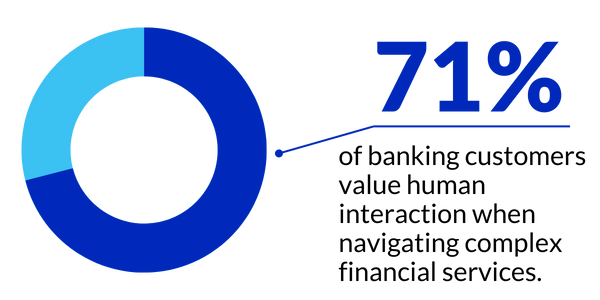Fear of Change in Legal Document Generation Systems
Leaders at financial institutions often tell me, “Our current document generation system isn’t perfect, but it’s familiar and gets the job done. The idea of switching vendors or onboarding something new feels overwhelming, so why risk the disruption?”
This perspective is understandable. Change brings uncertainty, and with so many competing priorities, it’s natural to weigh the comfort of the status quo against the perceived hassle of a significant change. Yet, as lending practices and legal/regulatory demands evolve, it’s worth considering whether “good enough” today will still protect an institution tomorrow.
Risks Hidden in Plain Sight
By recognizing and addressing the risks of relying on outdated, legacy document preparation systems now, lenders can better position themselves for long-term success-even during uncertain and challenging times. Upgrading to more sophisticated document generation systems offers significant advantages. Modern technology streamlines processes, reduces errors, and improves overall efficiency.
On the other hand, failing to modernize can leave commercial lenders vulnerable to a range of risks, including operational inefficiencies, increased compliance challenges, and the potential for costly mistakes. In today’s rapidly evolving financial landscape, staying ahead with advanced digital solutions is essential for maintaining a competitive edge and ensuring continued growth, as outlined below:
#1: Reactive Risks
I’ve noticed a common challenge in the industry: many institutions rely on annual legal compliance and documentation reviews by outside counsel to manage the risks associated with outdated loan documents. While this approach is understandable, it can leave lenders exposed to risks that arise between reviews, such as increased vulnerability to borrower defenses and legal limitations on enforcing remedies. Lending practices and regulations are continuously evolving, so waiting for an annual review can allow potential issues to go unnoticed or unaddressed for months. This process is often reactive and slow to adapt to important legal or regulatory changes.
Ongoing oversight by in-house legal teams is another option, but the high costs of maintaining such programs often make this approach impractical for many financial institutions.
Effectively managing risk in commercial lending requires frequent and proactive attention to legal, regulatory, and procedural developments. Recognizing this gap is the first step toward adopting a more comprehensive and effective risk management framework that keeps pace with the dynamic lending environment.
Takeaways:
- Risk doesn’t wait for a yearly review.
- Continuous and proactive compliance ensures that a lender will have all enforcement tools available when a borrower, project, or loan starts to run into problems.
#2: Irrecoverable Exposure
One of the greatest concerns for any commercial lender is the risk that, when a loan defaults, the legal remedies built into your documents may not be available when needed. As someone who has worked on both sides of these disputes, I’ve seen how even minor compliance issues in loan documents can prevent or limit lenders from fully exercising critical enforcement provisions, such as foreclosing on collateral, pursuing personal guarantees, obtaining receivers to take control of collateral assets, or collecting deficiencies on outstanding debts after the collateral properties are liquidated.
Lenders rely on these tools to avoid losses when loans go bad. But if the underlying documents aren’t properly prepared or kept up to date with current laws and regulations, those remedies may be out of reach when they’re needed most. This risk underscores the importance of a rigorous, proactive approach to legal document preparation and maintaining a continuously up-to-date compliance program in support of a commercial lending program.
Takeaway:
- Proactively ensuring your legal documents are accurate and up to date-preferably with cost-effective legal documentation and compliance automation technology-is essential to protecting your enforcement options when loans default.
#3: Difficulty In Scaling
Increasing loan volume is a key part of many commercial lenders’ asset growth and loan diversification strategies. But I’ve seen how outdated document preparation processes can quickly become a bottleneck as demand rises or growth opportunities present themselves. When systems can’t keep pace with a lender’s desire to increase or diversify loan production, the impact is felt across the entire organization: borrowers become frustrated with slower turnaround times and inaccurate documents, and lenders experience aggravation from low output and slowed growth due to missed opportunities.
Customers expect efficient, accurate service, and delays can erode both trust and loyalty. Internally, teams can find themselves spending a week on tasks that should take just minutes or hours, straining productivity and sapping morale. When a busy season hits, legacy systems often struggle to handle the surge, leading to lost business. As you plan for growth, consider whether your current processes will support your goals or stand in the way.
Takeaways:
- Outdated systems struggle to keep up with growth plans and increased loan volumes.
- Damaged reputation and unhappy borrowers directly impact customer loyalty and retention.
How To Properly Modernize
As you evaluate your options, consider a solution that’s trusted by banks of all sizes and designed to support both your current needs and future growth.
Solutions like GoDocs automate the creation of attorney-quality loan documents in minutes, backed by an ongoing 50-state compliance program that effectively eliminates the risk of costly legal errors. By integrating seamlessly with your existing banking infrastructure and loan origination systems, GoDocs allows for a smooth transition without disrupting daily operations.
With automation, your team can handle increased loan volume, confidently plan for loan production growth, accelerate closing times, and minimize manual workloads, all while maintaining the highest standards of compliance. This approach not only reduces legal fees and turnaround times but also helps protect your institution’s reputation by delivering faster, more accurate service to your customers.
Curious for more insight on why sticking with the old way might be your biggest risk? Download our full guide, Playing It Safe Is the Real Risk, for expert advice on why it’s time to modernize – plus key criteria for choosing the right technology partner.
Head of Business Strategies & Partnerships








